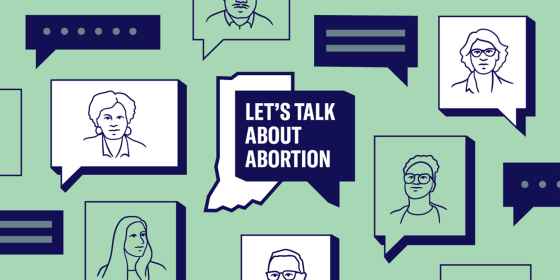In 1978, two women were moving out of their apartment in Gary, Indiana. Four men were helping them — a boyfriend of one of the women, two acquaintances, and their neighbor, Larry Hicks, a 20-year-old Black man.
The next day, the two male acquaintances were found stabbed to death in a nearby alley. When police followed a trail of blood directly to the two women’s apartment, they found one of the women’s boyfriends covered in blood. The three young adults blamed Hicks for the murder.
Later that same year, Hicks’ trial lasted only a day and a half before he was sentenced to the death penalty for the murders.
Two weeks before his scheduled execution, an Indianapolis attorney re-evaluated Hick’s case to find gross incompetence from Hick’s public defender. During the re-trial, one of the women recanted her testimony, and key pieces of evidence—like the murder weapon—were thrown out. Hicks was exonerated in 1980.
Hicks’ story is only one example of the fallibility of the death penalty. Unfortunately, hundreds of similar stories across the country reveal a disturbing pattern of unreliability in the cases that end up on death row.
Yet in June 2024, the state of Indiana announced it will resume state-level executions after a 15-year hiatus, despite public opposition to the death penalty continuing to rise.
In Indiana, the number of death penalty cases that have been reconsidered is striking — of the 97 people sentenced to death, 60 of these sentences have been commuted, reversed or dismissed, according to the Indiana Public Defender Council. At the national level, these same concerns persist. A 2014 study estimates that 4% of people on death row are innocent.
One person wrongfully put to death is one too many, but the Death Penalty Information Center has found at least 20 cases nationwide in which the defendants have been executed despite strong evidence they may have been innocent. And while an error-free criminal legal system is a worthwhile ideal, it is not our reality — which is why the irreversibility of the death penalty is so deeply problematic.
To make matters worse, the death penalty is not equally applied.
The United States’ dark history is peppered with impromptu, trial-less capital punishment against Black people.
In 1930, an angry mob broke into a Marion, Indiana jail to assault and lynch two Black men, who were accused of murdering a white man. A crowd of 10,000 spectators watched and cheered on the violence. The white perpetrators were later acquitted.
This history is directly connected to the current realities of the death penalty. Research finds that people of color are more likely to be prosecuted for capital murder, sentenced to death, and executed — people like Larry Hicks.
One common misconception among supporters of the death penalty is that holding someone in prison for life is too costly for taxpayers. Not only is this argument callous, but it is also inaccurate. The average death penalty case in Indiana costs $789,581, which includes a jury trial, defense attorney expenses, incarceration and execution, according to the Indiana Public Defender's Council, while the average life-without-parole case costs the state $185,422.
The United States is an outlier among democratic countries — a total of 112 countries have abolished the use of the death penalty. And while there has not been a state execution for 15 years in Indiana, all federal executions since 1995 have taken place at the U.S. Penitentiary in Terre Haute, making Indiana the epicenter of the federal death penalty in America.
The death penalty is a barbaric, error-prone practice that holds our state and country in the past while perpetuating racial disparities. It is a broken system from start to finish. The time has come for Indiana, and America at-large, to end the failed experiment of state-sanctioned executions.



